A supply-side interconnection is any connection to the service conductors on the supply-side of the service disconnecting means. The 2017 National Electrical Code (NEC) contains nine categories of equipment. A list of allowed supply-side interconnections is provided in NEC 230.82.
We will be focusing on the type of interconnections for power production systems (PPS) such as photovoltaic or solar systems and energy storage systems. For systems that depend on the utility meter to record energy production exported to the utility by the interconnected PPS, the interconnection must also be on the load side of the utility meter section, allowing the energy to flow through the meter in reverse. This effectively means that most PPS supply-side interconnections are being made between the service disconnecting means and the utility meter.
The only restriction in the NEC is in 705.12(A), which requires the sum of the overcurrent protection device (OCPD) of the combined PPS to not exceed the service rating. This rating is provided by the utility and is not necessarily the same as the main OCPD in the service entrance or based on the size of the service entrance conductors. Only use the service rating provided by the serving utility.
Background
Two types of PPS interconnections are allowed in the NEC, supply-side covered in 705.12(A) and load-side covered in 705.12(B). Choosing which type of interconnection to use depends on many factors. A load-side interconnection is often the preferred choice in order to take advantage of the safety provided by being in the load-side of the switchboard. However, it may not be feasible for many reasons, including the rating of the switchboard being too low, availability of OCPD, availability of unused OCPD spaces in the switchboard, the age of the switchboard, overall costs, and others.
Supply-side interconnections have almost no restrictions up through the 2017 NEC and are therefore very flexible. Most of the restrictions on their use will be imposed by the local Authority Having Jurisdiction (AHJ) approving the installation, which can vary from cursory review to a requirement for UL listing recertification by a Nationally Recognized Testing Laboratory (NRTL).
Types of interconnections
Manufacturer-supplied methods. The most straightforward interconnection is one where the manufacturer has provided for a supply-side interconnection in the switchboard. These generally fall into two categories: switchboards with multiple service disconnecting means, and switchboards with provisions for a busbar tap explicitly provided for that purpose.
The NEC allows up to six service disconnecting means, and if a switchboard is designed for multiple service disconnecting means and has a position available for the PPS disconnect, then it is just a matter of using the correctly-rated service disconnecting means to interconnect the system.
Switchboards can also be provisioned with a supply-side busbar tap in the design. This connection can be as minimal as providing identified busbar tap holes where lugs can be landed to a dedicated switchboard section that includes a fused service disconnect and production meter connected to the supply-side of the switchboard busbar. An example of a dedicated section is shown in photo 1. Some switchboard manufacturers will also offer retrofit kits to allow a supply-side busbar interconnection in a switchboard that was not otherwise designed for one.
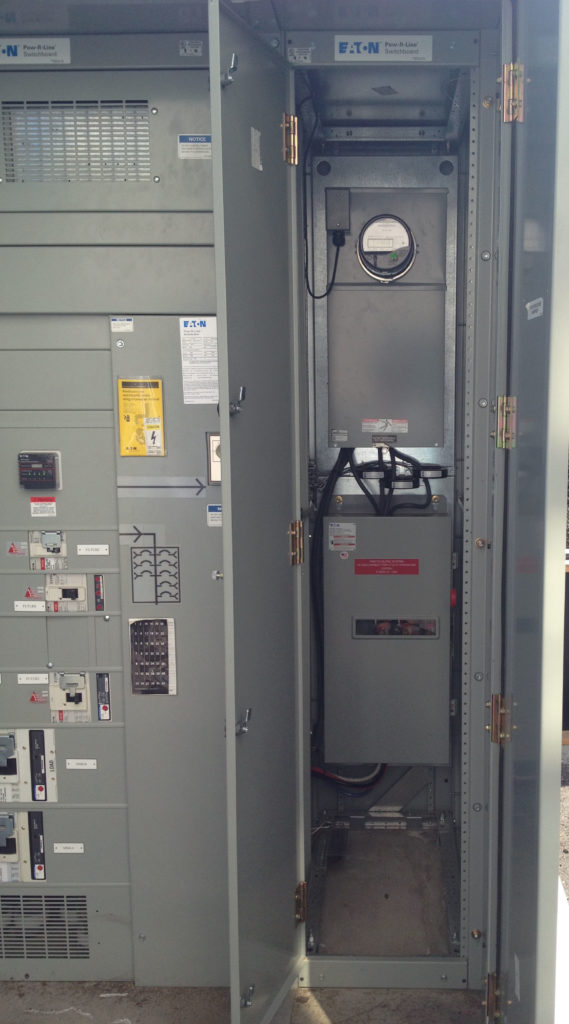
These methods of supply-side interconnections have the switchboard UL listing and do not require additional review, other than to verify that they meet the requirements of the manufacturer.
Interconnections of opportunity. This is any connection that, while possible to make, is not an allowed connection by the switchboard manufacturer. These interconnections will remove the UL listing of the switchboard because they are unauthorized modifications to listed equipment unless specific permission is obtained from the manufacturer. There are several possible ways to interconnect to the busbar that is acceptable by most of the industry:
- Use existing holes in the busbar to land lugs;
- use existing hardware to land a lug;
- drill holes in the busbar the then land lugs; or
- add busbar tabs.
Not all of these interconnection types are allowed in all jurisdictions. What is permitted in unapproved modifications is entirely up to the local AHJ, who is required to approve the installation because they must take responsibility for the examination of equipment under NEC 110.3. But unnecessary restrictions should be avoided if the methods are shown to provide safe and effective interconnections. A better option to having across-the-board restrictions would be to require an NRTL field evaluation for specific methods of interconnection.
An examination of the busbar can often find that there are existing holes that, while not intended for a tap by the manufacturer, can still be successfully used to land a lug by bolting the lug to the busbar. Connections between busbar sections, busbar splices also offer possibilities for landing a lug by either reusing the existing bolts or replacing them with equivalent hardware long enough to allow for the thickness of the lug, as shown in photos 2 and 3.
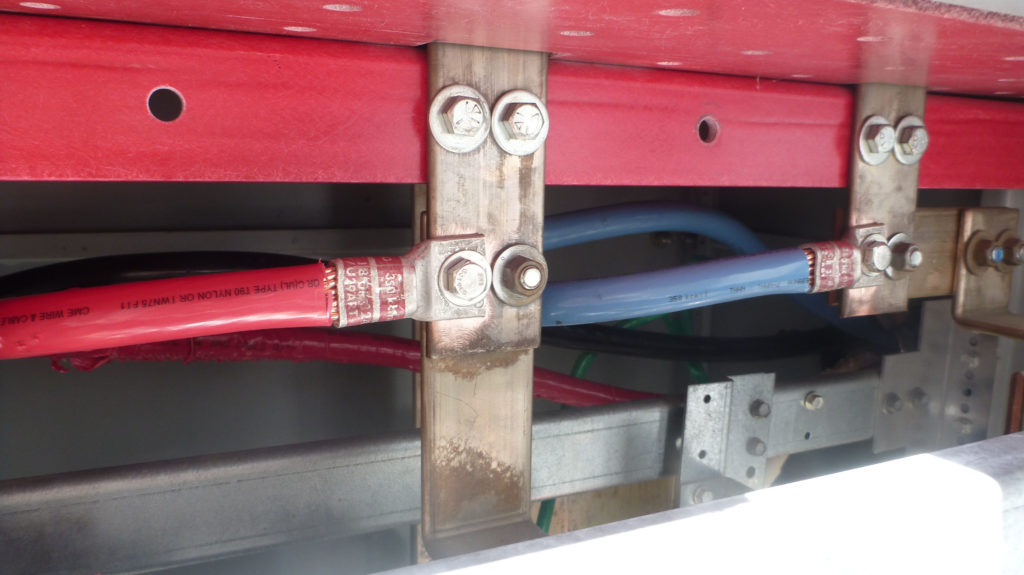
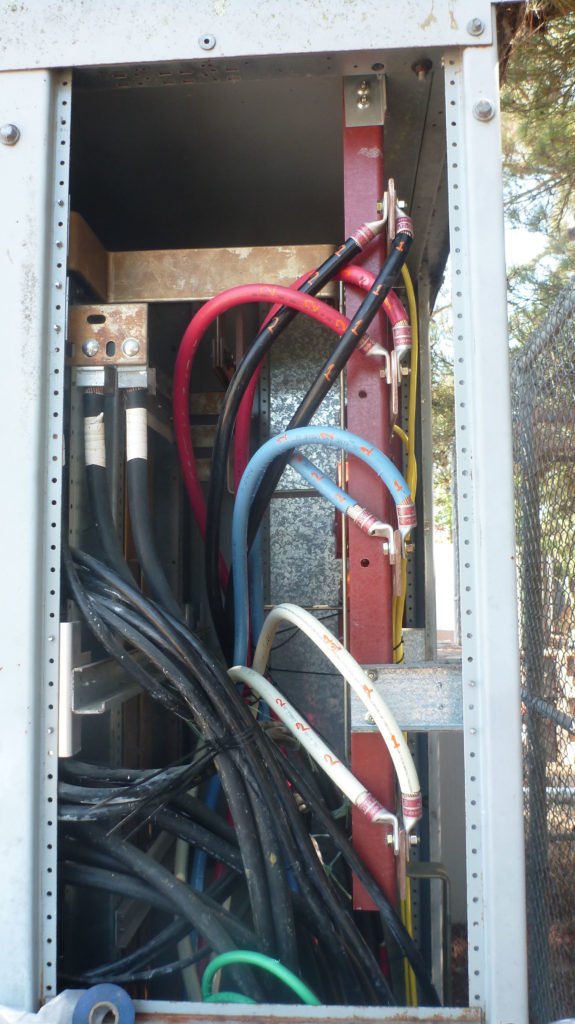
Photo 2. Photo 3.
Busbar tabs or extensions are sometimes used when multiple parallel interconnection conductors need to be landed, as shown in photo 4. Another possibility would be to use busbar clamps that attach to a conductor and clamp onto the busbar. This type of interconnection requires nothing other than room to maintain the necessary air gap. Last on my list of possibilities would be to drill holes in the busbar to land lugs, as shown in Figure 5.
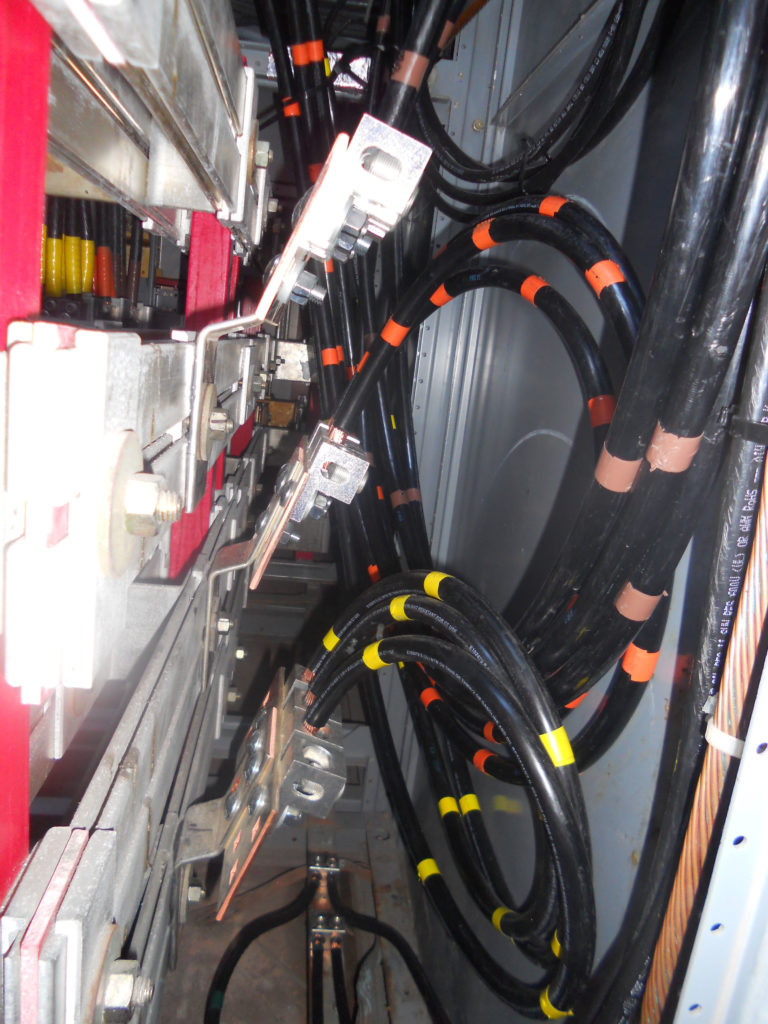
Photo 4.

Items to look for during an inspection
Switchboards 600 volts and below are listed to UL Standard 891. Evaluating an interconnection requires ensuring that the switchboard will still meet the requirements of UL 891 after the interconnection has been performed. It is, therefore, necessary that the person performing the inspection have access to a copy of the UL Standard and understands how it applies to these modifications. The most critical areas are:
- Maintaining air gaps between conductors and between conductors and grounded metal;
- using the correct hardware; and
- interconnecting in the right locations.
The inspection should be performed on the equipment only when not energized. Since this work is taking place on the supply-side of the service disconnecting means, it requires the utility to deenergize the service to the switchboard. This is often difficult to schedule since it requires not only utility involvement, but also that the power is turned off to the building supplied by the service entrance, and neighboring customers if on a shared distribution system. Quite possibly, the only time that will be available to inspect the work properly will be right after it is performed and before power is restored.
UL 891 defines the required minimum air gap based on the switchboard and maximum voltage. For example, the air gap for a particular switchboard might be 1 inch and, therefore, any added hardware, lugs, bolts, nuts, tabs, etc., that will be energized and are uninsulated cannot decrease the air gap between energized components of different phases or to grounded metal to less than 1 inch. As can be seen from the photos, space in switchboards can get tight. This may require making measurements between components if there is any question about the length of the air gap.
If hardware needs to be replaced, such as exchanging a shorter bolt with a longer one in a splice to allow for a lug, the replacement hardware needs to match the existing hardware. A Grade 5 bolt needs to be replaced with a Grade 5 bolt and not a lower grade. The earthquake rating and short-circuit rating of the bus system depend on using the correct hardware and will be compromised if inferior grade hardware is used. If hardware is added, such as attaching a lug to an unused hole in the busbar, the grade of the new hardware should match the grade of the existing hardware used in the bus system.
When attaching a lug to paralleled busbars with airspace between them, a spacer needs to be added to keep the busbars from being deformed when the lug attachment is torqued down. Take note of the separator used in photo 5 to support the parallel busbars.
Reusing attachment points that are connecting a busbar to insulated supports is not allowed. Photo 2 shows the interconnection to the busbar splice connectors and not to the supporting bolts just above them that connect the busbar to the fiberglass cross support.
Reusing hardware that interconnects busbar sections at splices is acceptable, as is landing on unused holes in the busbar. It is usually possible to land one to two conductors per phase directly to the busbar, but when there are multiple-phase conductors in parallel that need to be interconnected, a busbar tab will need to be attached to the busbar to allow for the extra space required to land three or more conductors per phase. There are also devices that clamp onto a busbar and will enable a conductor to land providing a noninvasive method of interconnection.
If there are no available holes or busbar splice points that can be used, another option is drilling holes in the busbar in which to land a lug, as shown in photo 5. Drilling holes are the most invasive of all the interconnection methods, and there are strict limits in the UL Standard on both the percentage of the cross-section area of the busbar that can be reduced and the percentage of the width of the busbar that can be reduced. An example would be that a hole cannot reduce the width of the busbar by more than 70 percent and cannot reduce the cross-section area more than 10 percent. These measures are in place to maintain the physical strength of (and maximum current density in) the busbar. This requires the use of the smallest hole possible that will comply with the attachment requirement of the lug or other device being attached to the busbar.
The drilled interconnection shown in photo 5 is unusual in that it was a manufacturer-approved field modification.
The neutral conductor needs special consideration. While the phase-conductors can be landed on the supply-side, the neutral-conductor needs to be landed on the load side of the switchboard’s neutral disconnect link. It’s a common mistake to land the neutral on the supply-side in the same area as the phase conductors.
Photo 6 shows a neutral and ground busbar connected with a neutral disconnect link on the left of the main OCPD. The neutral should be landed on the load side at the bottom with the other neutrals and not on the top with the neutral from the service. This maintains the function of the neutral-disconnect link.
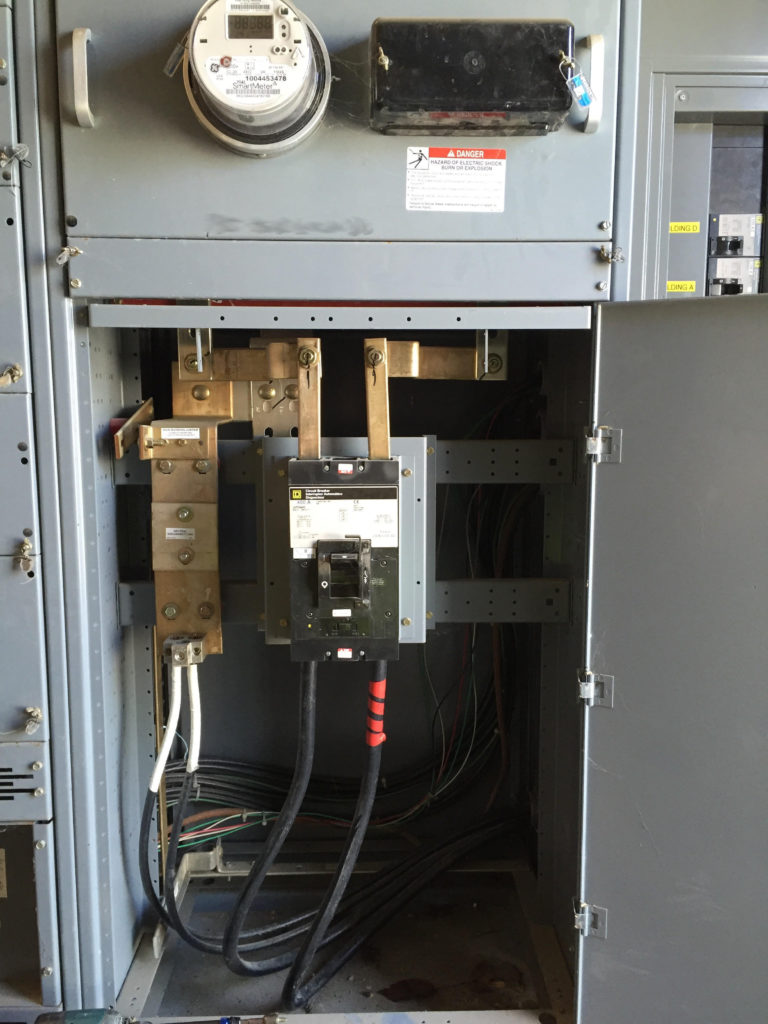
If an inspector chooses to apply an additional level of review, an NRTL field evaluation can be required where their personnel will make a site visit to apply the UL Standard to the field modifications. If they are in compliance, the UL mark can be reapplied to the switchboard, making it UL listed again.
References
UL Standard 891
To Tap or Not to Tap?, UL Electrical Connections, April 2010
Electrical Equipment for Use in Ordinary Locations, UL Product Category AALZ
Switchboards, Dead-front, UL Product Category WEVZ








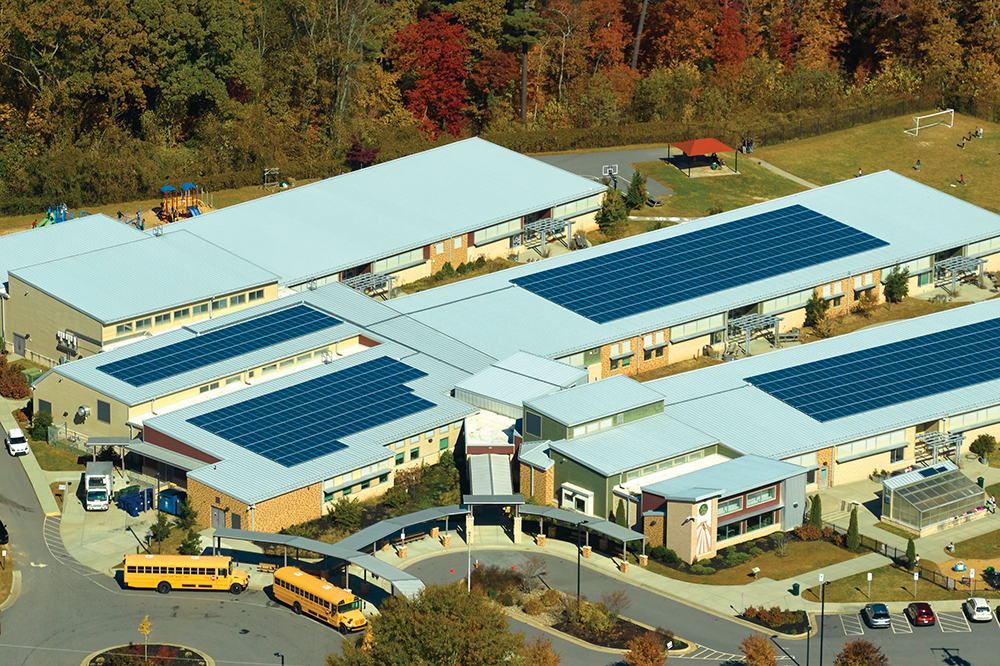

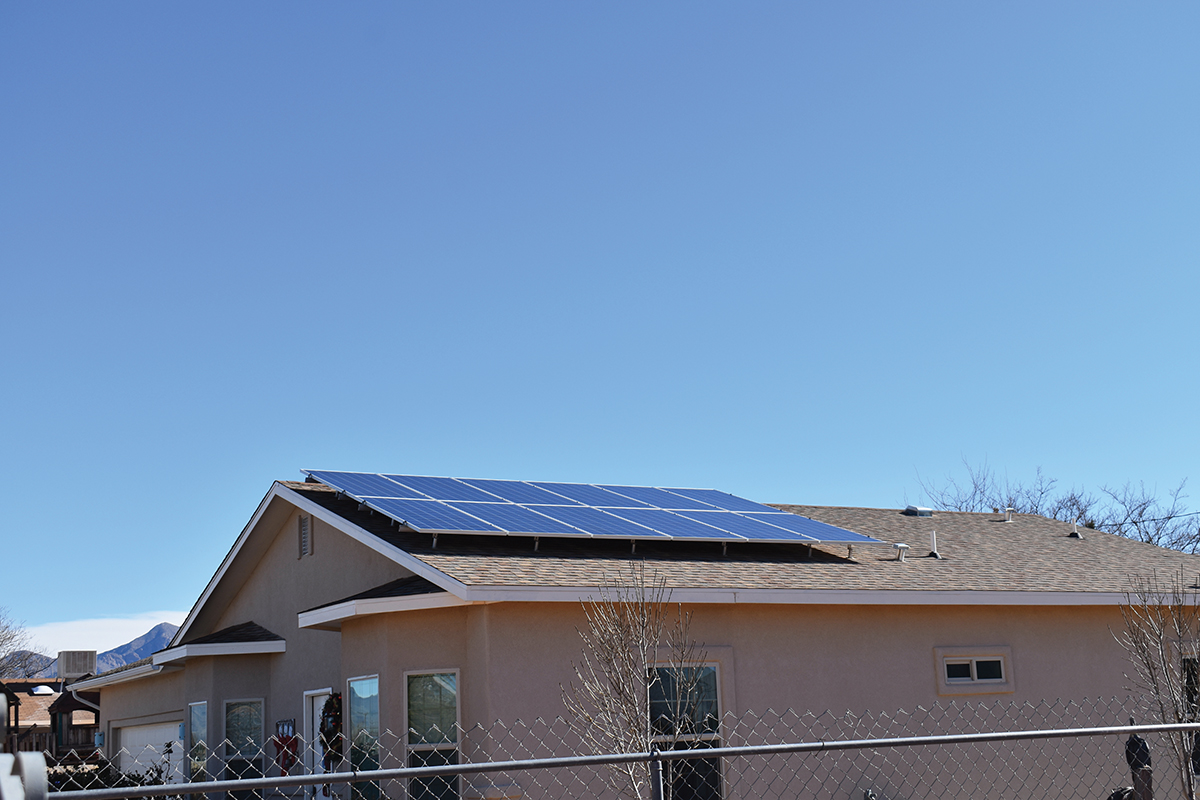
Find Us on Socials